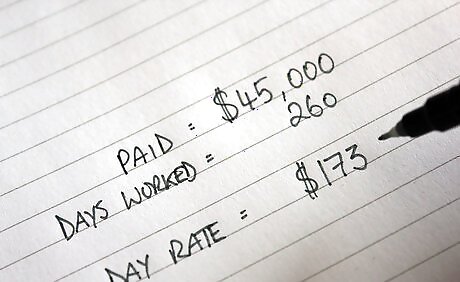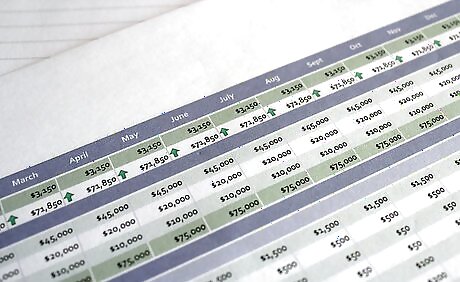
views

Gather the financial documents that detail the money you have made on a particular job. This can include your pay stubs, tax documents and/or signed contracts.

Calculate the total amount paid for the work you did. Remember to include commission, if that is part of your yearly salary. Generally, a day rate is calculated according to the gross income, and it does not factor in taxes, 401 K contributions or medical savings accounts. Taxes vary from state to state and country to country. If you are attempting to figure out how your daily rate competes against a national or state average, it is especially important to work with gross salary rates.

Figure out the number of days you worked on the job. For a standard, 5-day, work week and salaried job, you would multiply 5 times 52, the number of weeks in the year. Modify the result, 260, based on any un-paid work days.

Divide your contract or salary total by the number of days you worked. For example, if you received $45,000 and worked 260 days, your day rate would be $173 per day. Imagine you are working as a freelancer and you were paid $7,000 for a project that lasted 3 months. If you worked 5 days per week, you would multiply 5 times 12 (weeks) to get 60 total working days. Divide $7,000 by 60 to get your $116.67 day rate.

Repeat this process with other positions you have held to get a good idea of your salary history.




















Comments
0 comment